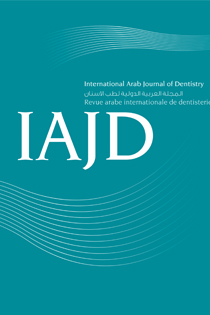Abstract
The objectives of the present study were 1) to evaluate the efficacy of periodontally accelerated osteogenic orthodontics (PAOO) when treating severe crowding in patients with Class I malocclusion; 2) to compare orthodontic treatment by modified PAOO approach for crowded cases without extraction versus traditional extraction orthodontic treatment regarding the duration of treatment and changes in the inclination of upper and lower incisors and 3) to study the short-term stability of the results for PAOO technique.
A randomized controlled trial was held at the Orthodontic Department of the Dental Faculty, Al-Baath University, Hamah, Syria. Thirty patients (13 males and 17 females) with a mean age of 20.43 years participated in the study. 15 patients were randomly selected to undergo PAOO treatment. During the first week following bracketing and wire activation, labial full thickness flaps were reflected in the maxillary and mandibular arches. Prior to the primary flap closure, a bone grafting/augmentation procedure was performed over the partially decorticated bone. Another 15 patients were randomly selected to undergo conventional treatment for decrowding (extraction of upper and lower first premolars); after first premolars extraction, decrowding and space closure were accomplished. The measured outcomes for the two groups included: duration of the orthodontic treatment, canine to canine width and inter-2nd premolars-width, upper and lower incisor axial inclination, distance between ls-point to the E Line, distance between li point to the E Line, SNA and SNB angles, maxillary and mandibular arch length analysis and maxillary and mandibular incisors irregularity.
The orthodontic treatment in the PAOO group was faster than that in the extraction group throughout the experiment (p<0.001). At the end of treatment, there were no statistically significant differences in inter-canines width, but the inter-2nd premolars width was statistically higher in PAOO group than in the extraction group.
Compared with traditional orthodontic treatment, the PAOO procedure provides a safe alternative for patients with moderate to severe crowding who desire the benefits of orthodontic treatment in a relatively short duration.

